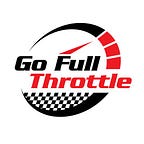Week 13 GFT NASCAR AI Driver Rankings: Elliott Holds P1 Ranking with Darlington recovery
9 May 2022
By Bob Francis, Managing Editor
Go Full Throttle Racing News
After Chase Elliott’s big win last week at Dover, the 9 team looked to have the pressure off and a bounce in their step. But things changed quickly on at Darlington when rain prevented Elliott from qualifying for the Xfinity Series race (start order set by points thus no “new” entries). Then Elliott cut a tire on the 15th lap of Cup Series practice, spun around and pounded the outside wall in turn 3.
The Amazing Recovery
How did Chase Elliott hold P1 in our GFT NASCAR AI Driver Rankings after this crash? The answer is amazing teamwork by the Hendrick Motorsports crews who prepared a back-up car and nailed the set up so close that Elliott was able to start last and drive through the field to finish 5th in Sunday’s Goodyear 400 at Darlington.
No Change in the Top 3
As with last week’s GFT NASCAR AI Driver Rankings, Elliott, Byron, and Chastain remain on top. However, Joey Logano’s win on Sunday vaults him up 5 places to P4. Kevin Harvick, who like Elliott also crashed in practice and started at the rear, jumps 2 spots to P12 with his 4th place finish. Also of note, Ty Dillon is back in the GFT Top 25 after his 12th place run at Darlington.
How do the Go Full Throttle AI models work? (Repeated for context as we have new subscribers joining each week)
Algorithms
The Go Full Throttle AI Driver Rankings is a cloud based predictive analytics system that uses our proprietary algorithms utilizing artificial intelligence and machine learning technology to dynamically tune and improve accuracy over time. Data feeds into our system include our Pre-Season rankings and the data available from NASCAR and other trusted NASCAR Cup Series sources that include (but not limited to) inputs such as Driver points, Stage points, Stage wins, top speed, lap times, and laps led from all practice sessions, qualifying and the races.
How do predictive models work?
Can artificial intelligence and machine learning algorithms really make accurate predictions? YES! In fact, our proprietary models accurately predicted 8 out of 10 F1 race wins in 2021, including Max Verstappen’s Driver Championship over Lewis Hamilton. Our NASCAR model was equally as accurate correctly predicting 7 of the drivers making the Round of 8 in the 2021 Cup Playoffs as well as predicting Kyle Larson winning the Cup Series Championship. These models will only get “smarter” in 2022 as more data and “learning” will improve accuracy.
Context is key!
“Artificial intelligence refers to the general ability of computers to emulate human thought and perform tasks in real-world environments, while machine learning refers to the technologies and algorithms that enable systems to identify patterns, make decisions, and improve themselves through experience and data” according to Columbia University’s School of Engineering. But Microsoft’s definition breaks this complexity down even more: “AI and machine learning enable companies to discover valuable insights in a wider range of structured and unstructured data sources. For better, faster decision-making, data scientists use machine learning to improve data integrity and use AI to reduce human error — a combination that leads to better decisions based on better data.” For us motorsports fans, we might use the analogy that artificial intelligence (AI) is the car and machine learning (ML) is the engine — you need both to win.
Dynamic tuning to improve accuracy
When we say “dynamic” we are referring to “near real time” data continually feeding the models. Besides the obvious final race results, as an example, our system will “watch” a number of data feeds looking for trusted information, such as the F1 live leaderboard with lap times during practice or qualifying results, laps led on race day, and final results.
